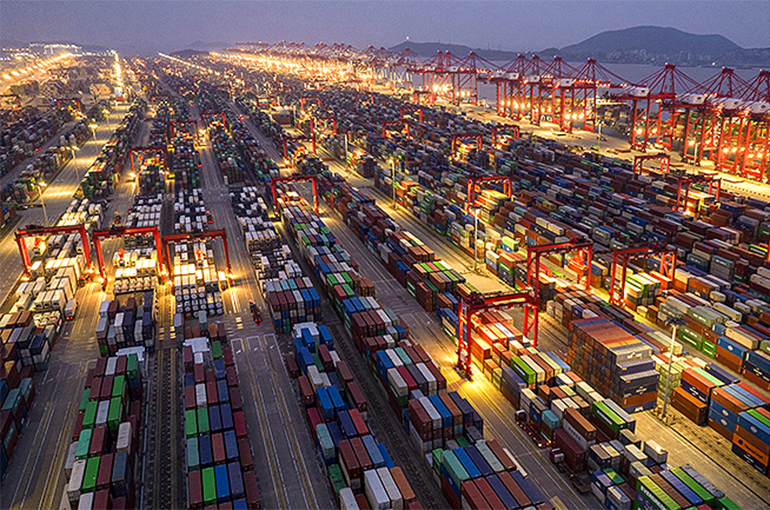 Chinese Exporters Shift Focus to Southeast Asia, Middle East as European, US Orders Tumble
Chinese Exporters Shift Focus to Southeast Asia, Middle East as European, US Orders Tumble(Yicai) Dec. 15 -- Chinese exporters, who used to regard Europe and North America as their main overseas sales destinations, are now turning their attention to emerging markets such as Southeast Asia and the Middle East as orders from developed Western countries slump amid higher tariffs and other factors.
Ququmeme Clothing was only able to close a few deals with European and North American clients this year, but orders from South East Asia, Russia and the Middle East are rising steadily to fill the gap, Yao Dong, general manager of the children’s clothing maker, told Yicai.
There have been big changes in the company’s export business this year, Yao said. After scouting both Vietnam and Malaysia, Yao has decided to set up an office and factory in Vietnam early next year and will soon start recruiting local employees who live near the border.
The birth rate in Southeast Asia continues to rise, which means the market for kids’ clothing will constantly expand, he said. Huzhou-based Ququmeme’s apparel, which is in the mid- to high-end range, should be able to complete well with local brands there.
Yao plans to export semi-finished clothing to Vietnam where it will be made into ready-to-wear garments and sold locally. This will save around 20 percent on production costs, Yao said.
Due to the proximity of Vietnam, transport times and logistical costs of these half-finished goods are controllable and the firm is also eligible for preferential tariffs under the world’s biggest trade pact, the Regional Comprehensive Economic Partnership, he added.
Intermediate Goods
The drop in orders from Europe and North America this year is not so much due to weak demand but because of squeezed profits caused by the higher tariffs imposed on China-made goods, Yao said. This means that those orders that were lost due to the hiked tariffs can be diverted to Vietnam.
Henglin Home Furnishings, which opened a factory in Vietnam in 2018, is investing further to expand its footprint in emerging markets like the Middle East, an executive said. Just this week the Huzhou-based firm linked arms with a company in the United Arab Emirates, Mass Vission, to gain better access to the UAE market.
Jiangsu Changjiang Paper has plenty of orders and it increased output in China by 30 percent this year, said Gu Li, general manager of the paper maker. Its Vietnamese factory accounts for almost one third of its total capacity, and most of the products are exported to the US.
It is quite difficult for a single commodity to only be manufactured in one country, Wei Jianguo, former vice minister of commerce and currently vice chair of the China Center for International Economic Exchanges, told Yicai. Further expanding the trade of intermediate goods will help boost exports.
As China’s manufacturing technologies continue to improve along with industrial upgrading, some end products can be partially manufactured in Europe and the US. This will lead to shifts in the global division of labor, which will help spur imports and exports and lure more foreign investment, Wei said.
Editors: Tang Shihua, Kim Taylor